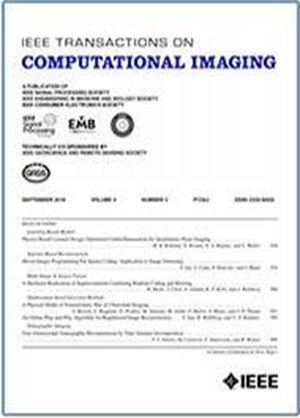高斯是你所需要的:通过扩散后验抽样解决反问题的统一框架
IF 4.8
2区 计算机科学
Q2 ENGINEERING, ELECTRICAL & ELECTRONIC
引用次数: 0
摘要
扩散模型可以通过模拟复杂的数据分布来生成各种高质量的图像。经过训练的扩散模型也可以是解决逆问题的非常有效的图像先验。现有的大多数基于扩散的方法通过在扩散反采样过程中近似似然函数来集成数据一致性步骤。在本文中,我们证明了现有的近似要么是不足的,要么是计算效率低下的。为了解决这些问题,我们提出了一种统一的似然近似方法,该方法包含协方差校正项,以提高性能并避免通过扩散模型传播梯度。当将校正项整合到反向扩散采样过程中时,对于选定的分布,可以更好地后验收敛于真实数据,提高了在真实自然图像数据集上的性能。在此基础上,提出了对若干反问题的似然函数的协方差矩阵进行因式分解和求逆的有效方法。我们的综合实验证明了我们的方法比几种现有方法的有效性。本文章由计算机程序翻译,如有差异,请以英文原文为准。
Gaussian Is All You Need: A Unified Framework for Solving Inverse Problems via Diffusion Posterior Sampling
Diffusion models can generate a variety of high-quality images by modeling complex data distributions. Trained diffusion models can also be very effective image priors for solving inverse problems. Most of the existing diffusion-based methods integrate data consistency steps by approximating the likelihood function within the diffusion reverse sampling process. In this paper, we show that the existing approximations are either insufficient or computationally inefficient. To address these issues, we propose a unified likelihood approximation method that incorporates a covariance correction term to enhance the performance and avoid propagating gradients through the diffusion model. The correction term, when integrated into the reverse diffusion sampling process, achieves better convergence towards the true data posterior for selected distributions and improves performance on real-world natural image datasets. Furthermore, we present an efficient way to factorize and invert the covariance matrix of the likelihood function for several inverse problems. Our comprehensive experiments demonstrate the effectiveness of our method over several existing approaches.
求助全文
通过发布文献求助,成功后即可免费获取论文全文。
去求助
来源期刊

IEEE Transactions on Computational Imaging
Mathematics-Computational Mathematics
CiteScore
8.20
自引率
7.40%
发文量
59
期刊介绍:
The IEEE Transactions on Computational Imaging will publish articles where computation plays an integral role in the image formation process. Papers will cover all areas of computational imaging ranging from fundamental theoretical methods to the latest innovative computational imaging system designs. Topics of interest will include advanced algorithms and mathematical techniques, model-based data inversion, methods for image and signal recovery from sparse and incomplete data, techniques for non-traditional sensing of image data, methods for dynamic information acquisition and extraction from imaging sensors, software and hardware for efficient computation in imaging systems, and highly novel imaging system design.
 求助内容:
求助内容: 应助结果提醒方式:
应助结果提醒方式:


